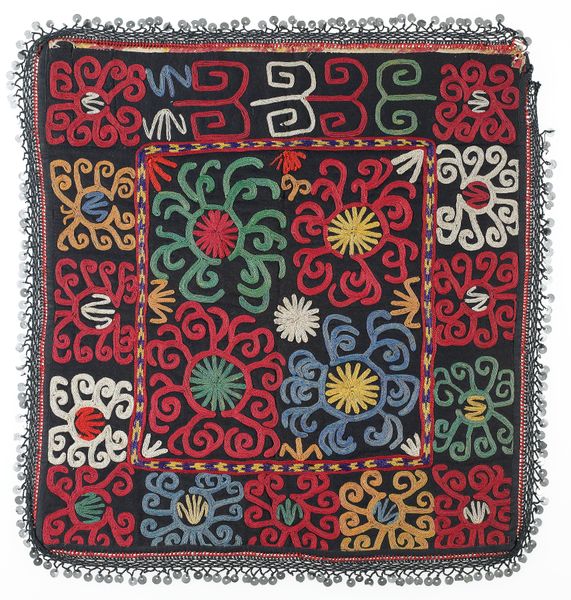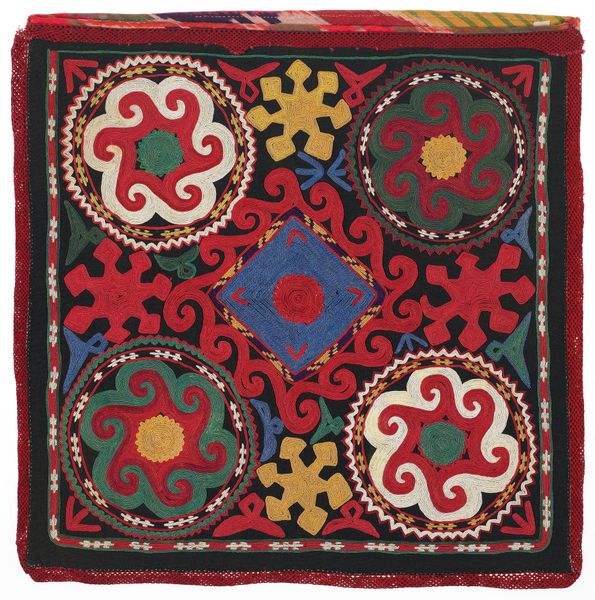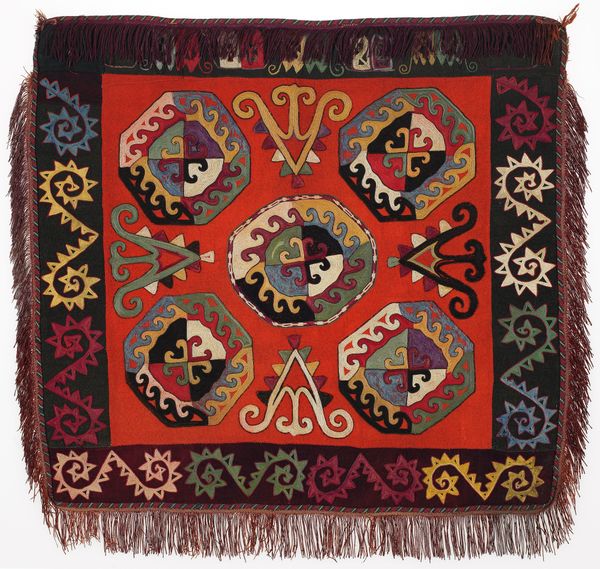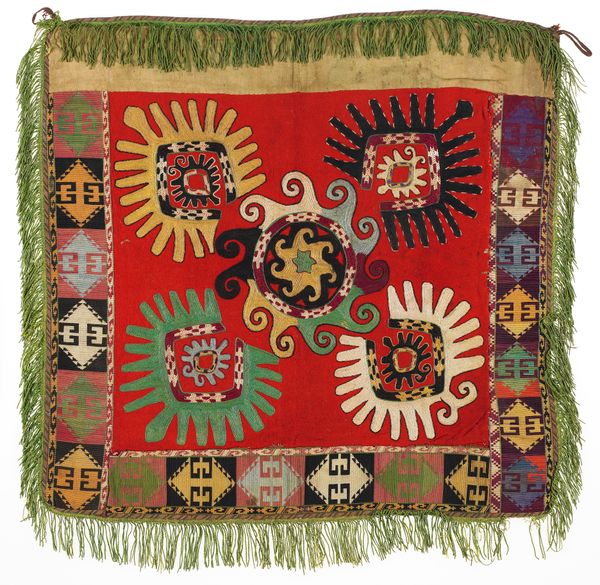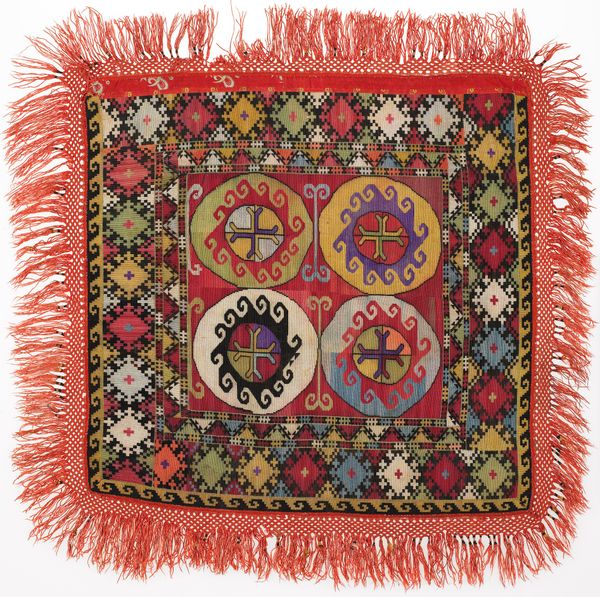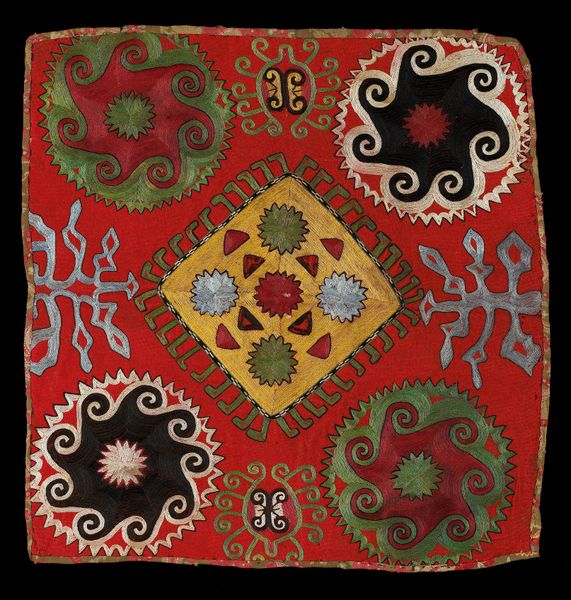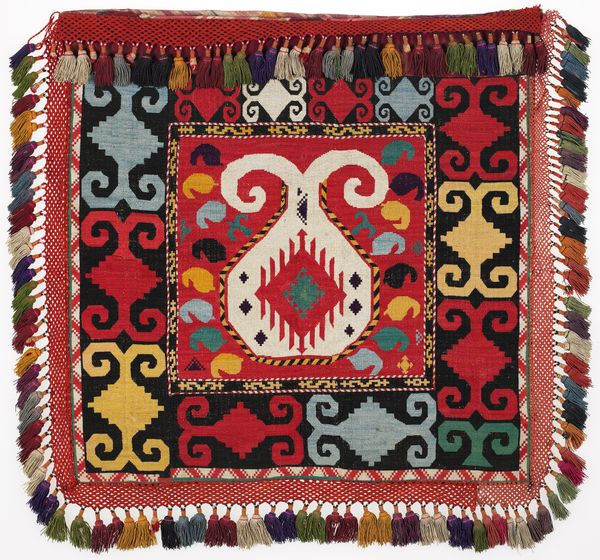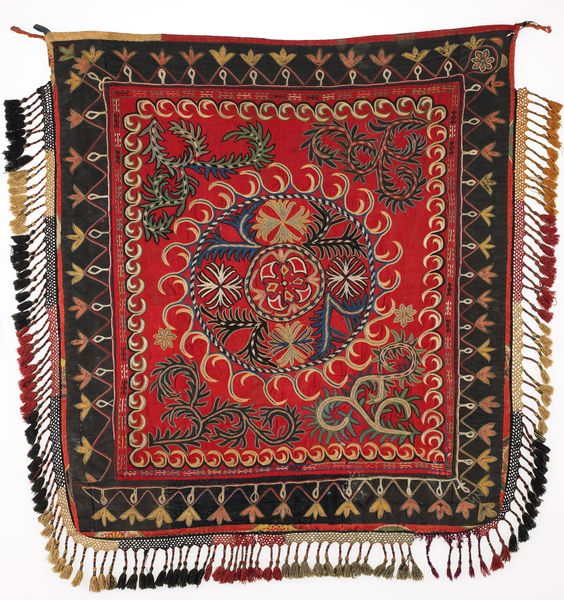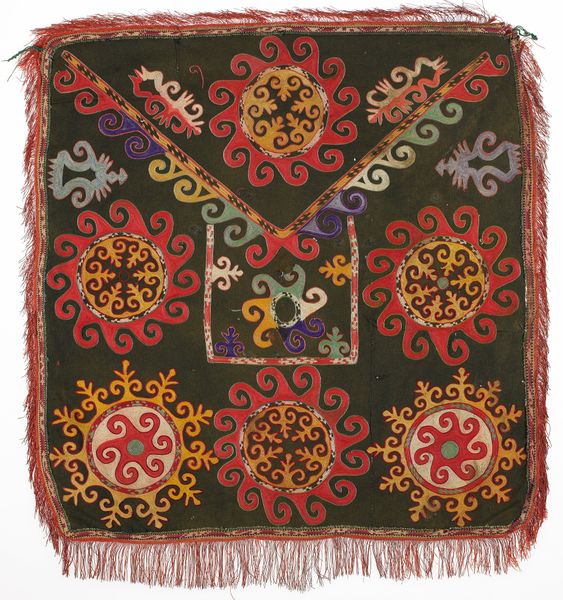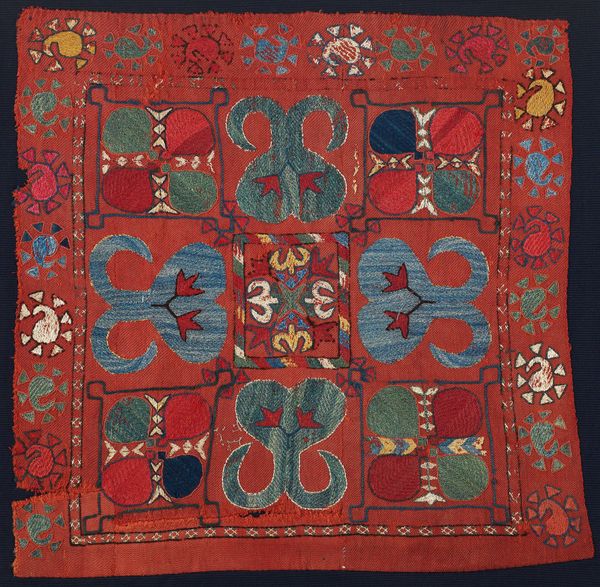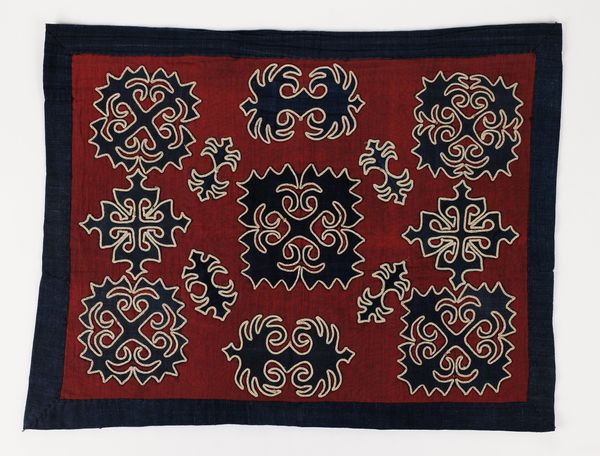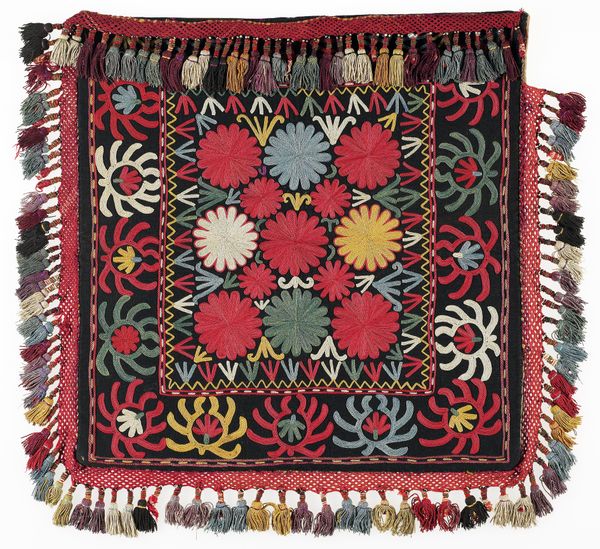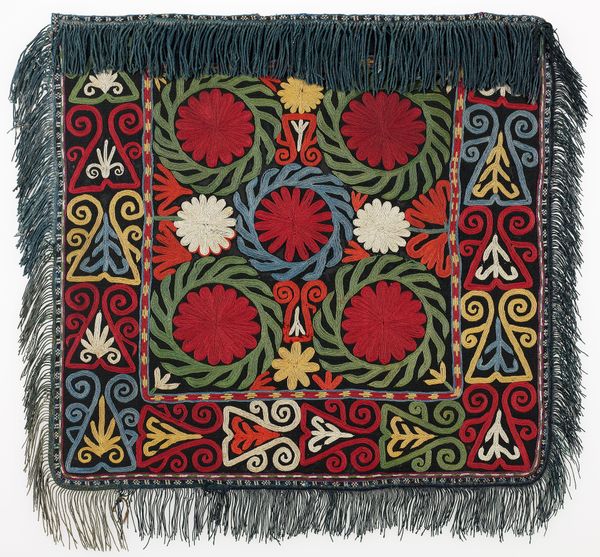
fibre-art, silk, textile, cotton
#
pattern heavy
#
fibre-art
#
silk
#
textile
#
fashion and textile design
#
pattern background
#
pattern design
#
geometric
#
repetition of pattern
#
regular pattern
#
pattern repetition
#
cotton
#
textile design
#
decorative-art
#
imprinted textile
#
layered pattern
Dimensions: 22 x 22 in. (55.88 x 55.88 cm)
Copyright: Public Domain
Editor: This is an "Ilgich," a textile piece from the late 19th or early 20th century, housed here at the Minneapolis Institute of Art. It's a vibrant red, covered in geometric designs, primarily crafted from wool and silk. I'm really struck by the intentional repetition of these shapes and patterns. It almost feels like a coded language. What kind of cultural information can we draw from this textile? Curator: That's a keen observation. These textiles, often made by women, played a significant role in Central Asian societies, especially among nomadic and semi-nomadic groups. The repeating patterns you notice are not just decorative; they're often laden with symbolic meaning tied to beliefs, lineage, or aspirations for prosperity. Editor: So, more than just ornamentation, it's communication? What would this have communicated, specifically? Curator: Absolutely. The Ilgich, a type of horse or camel blanket, signifies status and protection. Its creation was a carefully orchestrated process, imbued with prayers and intentions for a safe journey, and protection for both the animal and the family it represents. These objects weren't viewed merely as material possessions but as active agents within their social world. Do you notice any patterns that resonate particularly with you? Editor: The circular shapes jump out. They feel like suns or perhaps flowers. Curator: Indeed! Those sun-like motifs are common symbols representing life, energy, and cosmic harmony. Recognizing these repeating elements and the overall craftsmanship illuminates the crucial position weaving occupied within the culture, offering clues about social structures, economic activities, and spiritual values of the period. Editor: That’s fascinating! I’d always considered textiles purely decorative. I now have a new awareness for the function of patterns as social signifiers and important artistic mediums. Curator: And that highlights the importance of art history – seeing beyond the aesthetic surface and understanding art's place in society, both past and present.
Comments
No comments
Be the first to comment and join the conversation on the ultimate creative platform.
